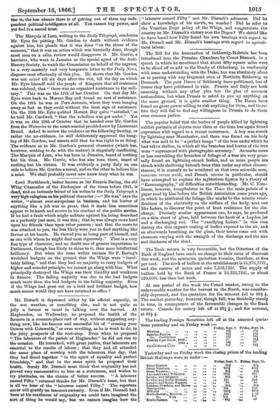The popular belief that the bodies of people - killed by lightning
exhibit portraits of objects near them at the time has again found expression with regard to a recent occurrence. 'A boy was struck by lightning near Manchester, and there was found on his body what was said to be "a perfect image " of the tree under which-he had taken- shelter, 'in which. all' the 'branches and leaves of the tree were "represented with photographic atenney." AS marks mitre Or less resembling the branches of foliage -of I tree are very 'gene- rally found on lightning-struck beidies,'and as More people are struck while sheltering beneath trees than under any other circum- stances, it 'is scarcely to be wondered at that even scientific men, novarum• •eruni, .avidi, and French ' savr fa in particular, should have attempted- to explain the tiyitterioits `Beres by a theory of "Kerailitography," all -difficulties nhtwithiitanding. "Mr. C. Tom- linson, however, recapitulates in the Thnes the' main points of a paper read by hint 'before' the British .Atitteiation-Sonie years ago, in which he ariribitteci the foliage-like tO the Minute' rami- fications of the electricity on the erfac.e' of the body, sent out like feelers, to discover the point of least resistance for the dis- charge. Precisely dialler appearances can, he-says, be produced on a thin sheet of glass, held betiveen the knob Of a Leyden jar and a discharging rod. The "ramifying feelers ". in this case destroy the thin organic coating of bodies exposed to the air, and on afterwards breathing on the glass, their traces come out with clearness varying with the strength of the discharge and the size and thickness of the sheet.






























 Previous page
Previous page